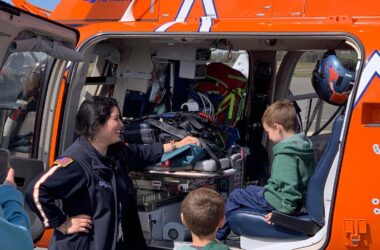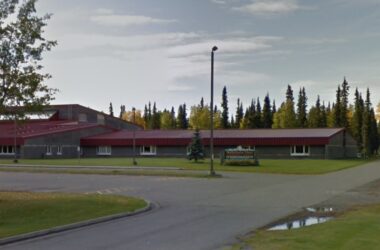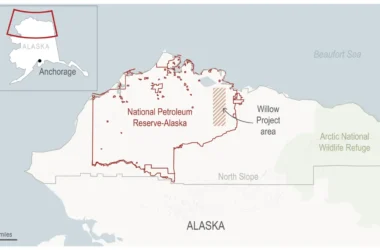 AlexAnna Salmon and her sister Christina Salmon-Binghurst are President and Board members of the Igiugig Village Council. Both are college educated with AlexAnna earning an anthropology degree at Dartmouth, and then a Masters in Rural Development at UAF. Christina was a journalism major for three years at UAA. Both in their thirties, they are witty, attractive, articulate and possess a no-nonsense pride in their responsibilities in the small village located at the outflow of the Kvichak River on the western end of Alaska’s largest lake.
AlexAnna Salmon and her sister Christina Salmon-Binghurst are President and Board members of the Igiugig Village Council. Both are college educated with AlexAnna earning an anthropology degree at Dartmouth, and then a Masters in Rural Development at UAF. Christina was a journalism major for three years at UAA. Both in their thirties, they are witty, attractive, articulate and possess a no-nonsense pride in their responsibilities in the small village located at the outflow of the Kvichak River on the western end of Alaska’s largest lake.
On August 6, 2020, Alex was visiting Christina on some tribal business when she was dumbfounded at the sight out the window in the lake. Trying to make sense of it, her mind reached for more familiar explanations.
“At first I thought maybe a Bristol Bay drift boat had come up the river and was sinking. Then I thought it was a whale. But it was shooting quite a rooster-tail wake and creating waves. Like a submarine it surfaced but it was not metal, it was fleshy. Then it submerged without showing any head, eyes, fins or tail, just its dark grey or blackish body. It shot off like a torpedo in the direction of New Whalen village.”
Christina shared the same thoughts and observations, roared in her pickup with cell phone camera in hand down to the lakeshore, her fourteen-year-old son in the back. She was able to only obtain a four-second and quite inconclusive glimpse. Unlike Nathan Hill’s footage at nearby Kokhanok in 2017, which clearly shows three distinct humps, Christina’s shows a large wake rolling in and a dimly seen dark form beneath the water.
Quickly, the entire village was alerted and scanned the waters, hoping to get another glimpse if it surfaced again. A drone was available but the weather was too windy. One villager owned a plane but he was off with it elsewhere, leaving all efforts to get better footage fruitless in any case, as the creature did not reappear.
About two weeks later, numerous residents of New Whalen took video footage as well. The investigative team I was part of, and which had come out to interview the various witnesses around the lake, was stymied in its efforts at a more complete investigation by the roaring winds of last weekend. However, the film crew from the Travel Channel made extensive interviews with the two sisters.
Iliamna is not the only lake to contain sightings and legends. Lake Clark has its own history that Nondalton residents take seriously. The 2017 sighting in Kohanok occurred on two different days, included nine adults, numerous children, binoculars, and cell phone footage. Then in 2018, local historian, Christian missionary, and commercial fisherman Paul Boskoffsky encountered an enormous surfacing fish in Lake Becharof, Alaska’s second largest lake and not far to the south of Iliamna.
It appears almost certain that serious, professional scientific investigation is by this time completely warranted. Local efforts of baited hooks, underwater cameras and random sightings simply cannot willfully conjure the creature. Many local residents have gone fifty years and never seen it.
The speculations are as endless as the mystery. Native folklore of the creature goes back before recorded history. Sightings by pilots, state biologists, missionaries and villagers all talk about something big, but the comparisons in color, shape and behavior all vary from there, from a Loch Ness Monster style creature, to beluga whales, sleeper sharks, giant sturgeons, grey whales and pods of harbor seals.
But the Salmon sisters know that what they saw was out of the normal range of science, and needs explaining. They were told they were lucky, even “blessed” to join the ranks of the privileged few who have seen it, and they ought to be taken seriously. Alaska’s big lakes might indeed harbor a legitimate cryptid — an animal heretofore unknown to science.






